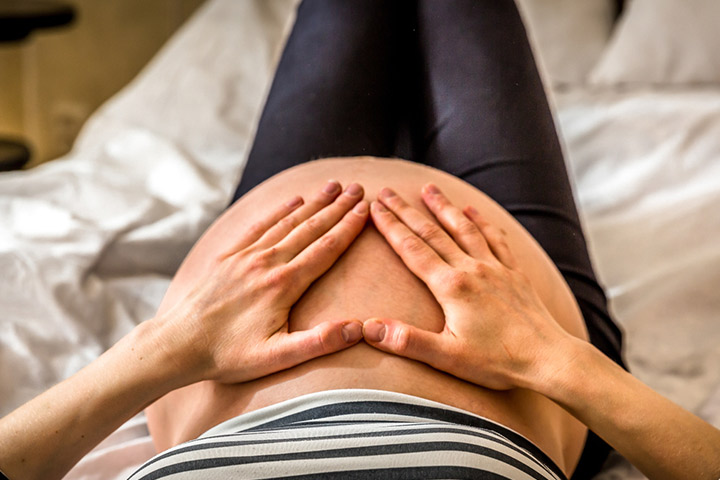
Image: Shutterstock
Feeling your baby kick is one of the most enthralling moments for any woman during their pregnancy. And it is not just for the expectant mom, feeling your baby’s movements can be a fascinating experience for the dad-to-be as well. You suddenly realize how real it all is and that you have a real person growing inside you. The feeling is surreal. The nausea, heartburns, and aching pain will suddenly seem worth it once you feel that little flutter.
Every pregnancy is unique and hence there is no particular day that you will feel your baby’s kick. Pregnant women generally feel the first movements in the second trimester somewhere around 18-25 weeks of pregnancy. New moms are more likely to experience baby movements once they are into the 25th week of pregnancy. Whereas baby movements come a little early for second or third-time moms somewhere around 18 weeks. Keeping a count of your baby’s movements can be beneficial to keep track of your baby’s well-being. Here’s all there is to know about baby movements trimester-wise (1).
Baby Movements In The First Trimester
You are unlikely to feel any movements during the first trimester of your pregnancy. If your doctor does an ultrasound, say around your 12th week or so, he/she may point out that your baby has already started moving and rolling inside your womb. But you are unlikely to experience any movements without an ultrasound during this period. But don’t worry, your baby will make up for the lack of movements during the second and third trimesters (2).
Baby Movements In The Second Trimester
The second trimester is going to be an exciting one in your pregnancy when the morning sickness is starting to fade away and you start feeling tiny flutters in your belly. It might be hard to understand your baby’s first movements initially as your baby is still small and you are not used to anything like it before. But slowly, you will begin to feel these movements which are also known as quickening. Women can experience quickening as early as 14th week, however, most women experience it once they are into 18 weeks of pregnancy (3).
Baby Movements In The Third Trimester
By the time you are into your third trimester, there will be no mistaking your baby’s kicks and punches. Your baby has grown in the third trimester and your womb is going to be a bit cramped, so the baby kicks are going to be a little less dramatic. Some kicks may cause you to flinch as your baby is becoming stronger. However, the movements wouldn’t be less frequent than before (4).
How To Count Your Baby’s Movements
Monitor your baby’s movements when you first start feeling them, which is somewhere around your second trimester. By keeping track of your baby’s movements, you will also see a pattern. Slowly you will be able to figure out when they are most active. It can be after a workout or having a meal or after drinking something cold. Women also find that their babies are more active later in the evening, after 9 p.m. when the blood sugar levels start declining (5).
The American Congress of Obstetricians and Gynecologists recommend monitoring your baby’s movements and timing how long it takes to feel ten flutters, kicks, rolls, or swishes. You should be experiencing 10 movements within 2 hours.
If you have not felt 10 movements within a period of 2 hours, wait for a few hours and try again. If you do not feel 10 baby kicks after trying for the second time, contact your doctor immediately. By now you might be familiar with your baby’s movements and patterns. If you observe any significant deviation from this pattern over a period of 3 to 4 days, contact your doctor.
Counting your baby’s movements every day will help you notice any significant deviations or changes and it can also help you in identifying potential problems. Don’t panic if you are not able to figure out what you are feeling at a couple of times in the beginning. Slowly but surely you will notice a pattern.
















